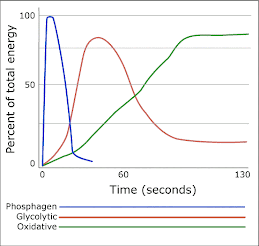This Blog is Due before Monday Sept. 22
There are several components to total physical fitness. We break them down into Health realted components of fitness, which we recently assessed with our fitness testing, and Skill related components of fitness.
Skill related components of fitness have less to do with your health and well being and more to do with your ability to perform well in sports and activities. There are six skill related components of fitness. They Are:
Agility: The ability to rapidly and accurately change the direction of the whole body in space.
Balance: The ability to maintain equilibrium while stationary or moving.
Coordination: The ability to use the senses and body parts in order to perform motor tasks smoothly and accurately.
Power: The amount of force a muscle can exert.
Reaction Time: The ability to respond quickly to stimuli.
Speed: The amount of time it takes the body to perform specific tasks.
Next week we will be testing our skill related fitness levels. For this weeks blog, I want you to pick the two skill related fitness components that you are the strongest in and tell me what sports or physical activities lend themselves to those skill related components.
